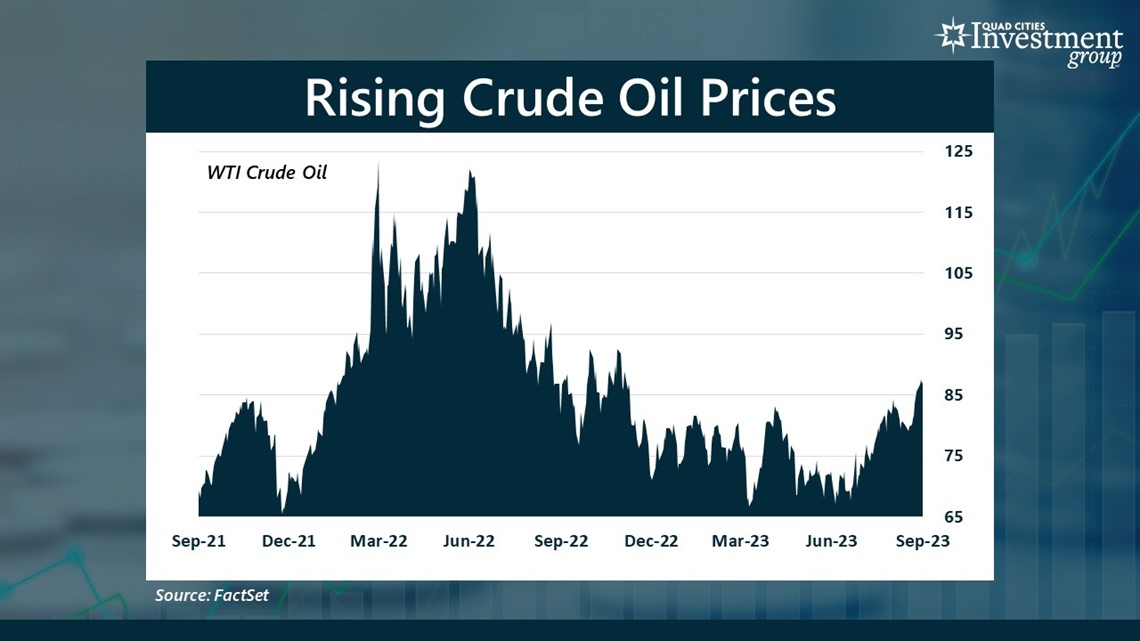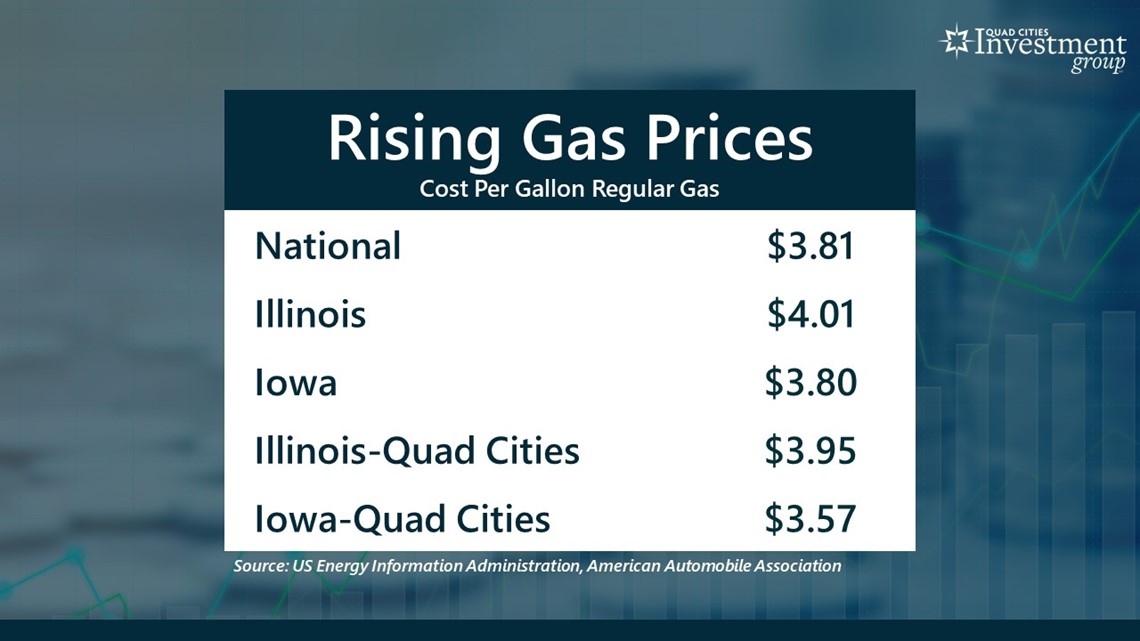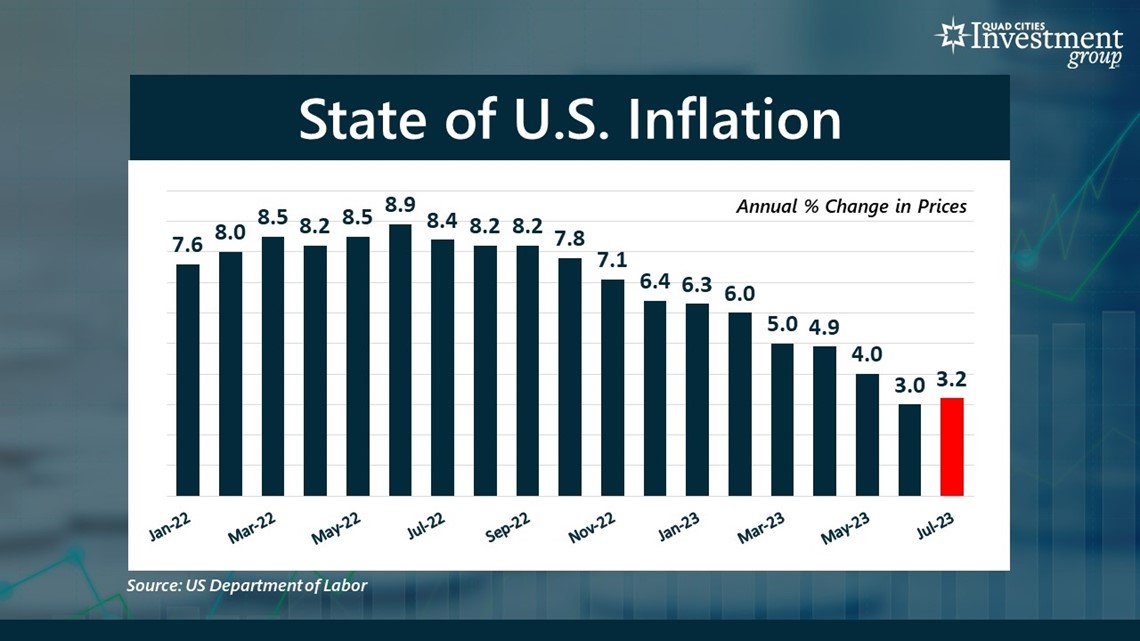MOLINE, Ill. — For much of the summer, gasoline prices have been steadily rising. According to the US Energy Information Administration, the national average for a gallon of regular gas now stands at $3.81, an 11-month high. This is up 7.5% from June and is nearly 20% higher since January.
News 8's David Bohlman sat down with Mark Grywacheski of the Quad Cities Investment Group to discuss these rising prices.


Bohlman: Why are we seeing this sudden rise in gas prices?
Grywacheski: It all ties back to the price of crude oil which is then refined into gasoline, diesel fuel, jet fuel, kerosene and a host of other products. Now, a little history:
Last summer, the price for crude oil rose to over $120/barrel. But then we get this steady decline in prices from $120/barrel to around $67/barrel. This sent gasoline prices from an all-time high of over $5/gallon to around $3.30/gallon.
But then in May, OPEC and Russia agreed to significantly reduce their crude oil production. OPEC is a collection of 13 nations led by Saudi Arabia that controls 40% of the world’s crude oil production. The goal was that by reducing the global supply of crude oil, OPEC and Russia would inherently drive crude oil prices higher.
And that’s exactly what’s happening. The price of crude oil has risen from $67/barrel and is quickly approaching $90/barrel, a 10-month high. And with these rising crude oil prices comes higher prices for gasoline, diesel fuel, jet fuel and other crude oil related products.


Bohlman: The national average for a gallon of regular gas has risen to $3.81. But what are gas prices from a local standpoint?
Grywacheski: As with most costs/expenses, where you live is a primary factor.
- National: The national average for a gallon of regular gas is $3.81, up about 20% from January.
- Illinois: Illinois has the 10th highest average price in the country at $4.01/gallon. In Chicago, that price rises to $4.55/gallon.
- Iowa: Iowa ranks #31, at $3.80/gallon, in-line with the national average.
The most expensive state for gas is California at $5.36/gallon while the cheapest state is Mississippi at just $3.28/gallon.
Here in the QC, the price you pay at the pump is heavily dependent on which side of the river you fill up on. On the Illinois side of the river, the average price is $3.95/gallon while on the Iowa side, it’s about 10% cheaper at $3.57/gallon.


Bohlman: On Wednesday, the Department of Labor will release its latest report on inflation. Do you think these rising energy prices will impact the state of inflation in the country?
Grywacheski: In my opinion, one of the main drivers of inflation falling from 8.9% last June to 3% this June is from the decline in crude oil prices. Again, during this time, the price of crude oil fell from $120/barrel to around $67/barrel.
But we need to understand the expansive impact of crude oil on our economy. From a barrel of crude oil we get gasoline, diesel fuel, jet fuel, kerosene, heating. It’s used in the production of chemicals and plastics. As crude oil prices rise, so do the costs of manufacturing and production, shipping and transportation and operating costs. All these higher costs ultimately get passed onto the consumer in the form of higher retail prices.
So, in July, inflation rose from 3% to 3.2%. On Wednesday, inflation is expected to rise even higher.
Watch more news, weather and sports on News 8's YouTube channel

